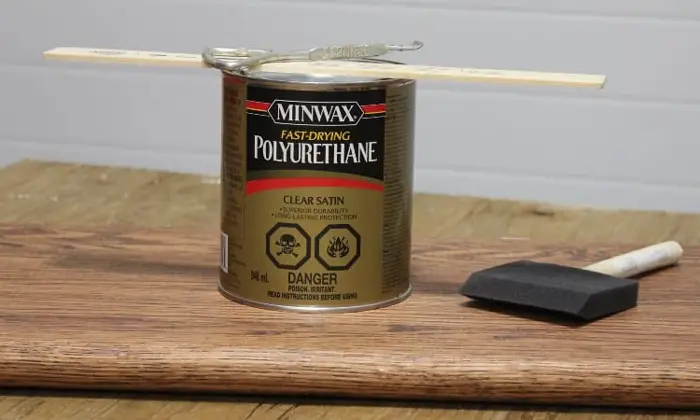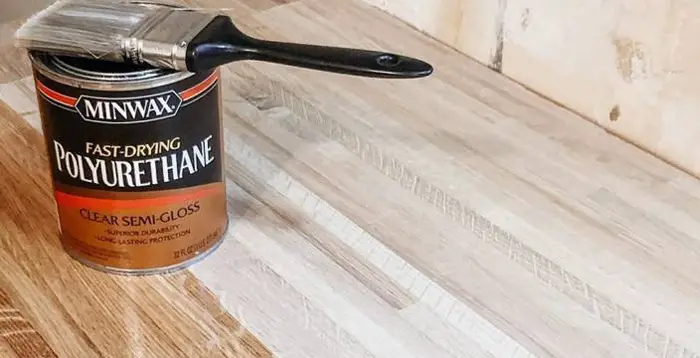What Is Polyurethane? What Is Polyurethane Used For?
When it comes to versatile and innovative materials, polyurethane takes the spotlight. Polyurethane (PU) is a polymer composed of organic units bonded by carbamate (urethane) linkages. This extraordinary chemical has made its way into a variety of industries and applications.
So, what is Polyurethane? What is Polyurethane used for? It is a synthetic polymer formed by a chemical reaction involving polyols, alcohols with multiple hydroxyl groups, and isocyanates, compounds with the N=C=O functional group. This reaction produces a chain of repeating units, which results in the formation of the polyurethane polymer.
Continue reading to learn more about polyurethane and its applications in a variety of industries. We will also discuss the benefits and drawbacks of polyurethane.
What is polyurethane?
Polyurethane is the result of a complex chemical reaction between two primary components: diisocyanates and polyols.
Diisocyanates are compounds with two isocyanate groups (-NCO), whereas polyols are molecules with multiple hydroxyl groups (-OH). When these components react, a process known as polymerization occurs, in which molecules link together to form a polymer chain.

And Carbon dioxide gas is produced as a byproduct of this reaction. Thus, the type of diisocyanate, polyol, and manufacturing conditions used all have an impact on the final properties of the polyurethane product. This makes polyurethane exist in different forms such as:
- Foam: Polyurethane foam is a versatile material with open or closed cell structures. Open-cell foam is soft and flexible, allowing air to pass through, while closed-cell foam is rigid and provides excellent insulation.
- Elastomers: Polyurethane elastomers have rubber-like properties such as flexibility, resilience, and durability. They are used in applications that require abrasion resistance and impact absorption.
- Thermoplastic Polyurethane (TPU): TPU is a versatile material that combines the properties of rubber and plastic. It’s used for flexible products like phone cases, sportswear, and medical tubing.
- Spray Foams: Polyurethane spray foams expand upon application, filling gaps and voids.
- Liquid Polyurethane: This is used in casting and molding applications. It can be poured into molds to create various shapes and prototypes with intricate details.
What is Polyurethane Used For?

Polyurethane’s adaptability and diverse properties have led to its integration into a wide array of industries, each capitalizing on its unique attributes. Here are 15 industries where polyurethane is used.
1. Automotive
- It’s utilized to create comfortable and supportive car seats.
- Used in making bumpers that offer impact resistance and noise-reducing interior components.
- Wheel tires, suspension bushings, and shock absorbers are also crafted from polyurethane.
2. Furniture and Bedding
- Polyurethane foam is used to make cushions and upholstery for sofas, chairs, and other seating furniture.
- Various densities of polyurethane foam are layered in mattresses to create a surface that conforms to the body’s contours while providing adequate support.

3. Construction
Here are ways polyurethane is used in construction.
- Rigid polyurethane foam panels are used as insulation in walls, roofs, and floors.
- Also, polyurethane foam can be injected into door and window frames, enhancing their insulating properties.
- Liquid polyurethane is sprayed into cavities, expanding and solidifying to form an airtight and efficient thermal barrier. This method seals gaps and crevices that traditional insulation methods may miss.
- Elastomeric polyurethane sealants and coatings create a protective layer that shields against weathering, water infiltration, and other environmental factors.
- Open-cell polyurethane foams are employed in acoustic panels and baffles, effectively reducing noise levels within buildings.
- Polyurethane injection is used for concrete raising and repair. Injecting expanding polyurethane foam beneath sunken concrete slabs lifts and levels them.
4. Footwear
Polyurethane’s cushioning properties make it ideal for shoe soles.
5. Marine
Polyurethane’s resistance to water and chemicals is indispensable in the marine industry. It’s used for boat hulls, decks, buoys, and protective coatings that guard against saltwater corrosion.

6. Textiles and Apparel
Polyurethane-coated textiles provide waterproofing that shields against rain and moisture while maintaining breathability, allowing sweat vapor to escape.
Thus, athletic clothing benefits from its moisture-wicking properties, such as sweat away from the body. Polyurethane also stretches to contribute to garments that move seamlessly with the body during exercise.
7. Aerospace
Polyurethane is used in aerospace applications for creating lightweight, durable components, insulation panels, and even protective coatings for spacecraft.
8. Medical Devices
In the medical field, polyurethane shines with biocompatibility. It’s employed for catheters, wound dressings, and implants due to its non-reactive nature within the human body.
Other ways polyurethane is used in the medical field are surgical drapes and gowns, surgical gloves, oxygen masks, and closure wound strips.
9. Packaging
Polyurethane cushioning properties contribute to the development of protective packaging solutions. The packaging protects electronics and fragile items and reduces damage risks during shipping.
10. Sports and Recreation
The durability of polyurethane benefits sports equipment. Polyurethane improves performance and safety in various applications, from surfboard fins and skateboard wheels to ski boots and protective gear.

11. Electronics
Polyurethane’s electrical insulation capabilities are harnessed in electronic components, protecting against electrical interference and moisture. Also, polyurethane’s insulating properties improve energy efficiency in refrigerators, freezers, and water heaters.
12. Repair and Aftermarket
Polyurethane adhesives and sealants are used in automotive repair to bond and seal various components, ensuring structural integrity and safety.
13. Oil and Gas
In the oil and gas sector, polyurethane is used for producing durable pipeline coatings that protect against corrosion, abrasion, and environmental factors.
14. Military and Defense
Polyurethane is often incorporated when making helmets, body armor, gloves, and knee pads for its impact-absorbing properties and lightweight design.
15. Woodworking and Carpentry
Polyurethane is widely used as a protective coating for wooden surfaces, sealing and protecting them from moisture, wear, and environmental factors. As a finish, polyurethane forms a tough and resilient layer that protects wood from scratches, stains, and impacts.
Here is a video of polyurethane being used as a coating.
Advantages Of Polyurethane
Polyurethane is a remarkable material with numerous benefits that have propelled it to the forefront of innovation in various industries.

Durability and Longevity
Polyurethane is extremely durable and ideal for harsh environments and high-stress applications. It’s resistant to wear, tear, and degradation.
Versatility
Polyurethane’s various forms, from foams to coatings, elastomers, and adhesives, allow it to be used in a wide range of industries. Its adaptability and ability to serve various needs make it invaluable in many industries.
Customization and Design Flexibility
Polyurethane can be tailored to meet specific requirements, allowing manufacturers to create products with precise characteristics.

Energy Efficiency
The insulating properties of polyurethane significantly contribute to energy efficiency. Polyurethane, whether in the form of insulation panels, foam-filled doors, or spray foam for buildings, minimizes heat transfer, lowering energy consumption and improving indoor comfort.
Lightweight and High Strength-to-Weight Ratio
Polyurethane’s lightweight nature doesn’t compromise its strength.
Comfort and Ergonomics
Polyurethane foams provide comfort and ergonomic support in mattresses, seating, and footwear.
Water and Chemical Resistance
Polyurethane’s resistance to water and many chemicals makes it ideal for outdoor and marine applications.
Enhanced Safety
Polyurethane contributes to safety by providing impact resistance in protective gear, shock absorption in footwear, and insulation in electrical components.
Disadvantages Of Polyurethane

Every good thing must always have a bad side to it, the disadvantages of polyurethane include:
Vulnerability to UV Degradation
Many polyurethane materials degrade when exposed to sun ultraviolet (UV) radiation. This can cause fading, discoloration, and reduced material strength.
Environmental Impact
The production of polyurethane necessitates the use of potentially hazardous chemicals. Furthermore, traditional polyurethane materials may not be biodegradable, raising concerns about waste and pollution.

Potential for Off-Gassing
Certain polyurethane foams and coatings, particularly when new, can emit volatile organic compounds (VOCs) and other off-gassing substances.
Brittleness in Cold Conditions
Some polyurethane materials can become brittle in cold temperatures, reducing their flexibility and performance. This can be an issue in applications that require material flexibility in low-temperature environments.
FAQs
Here are other questions that are related to the topic: What is polyurethane?
Q1. How can I maintain polyurethane products?
Regular cleaning and proper storage can prolong the lifespan of polyurethane items. Follow manufacturer guidelines for cleaning agents and methods.
Q2. Is polyurethane flammable?
Yes. When exposed to fire, some polyurethane materials, particularly foams, can become flammable and emit toxic fumes. It is critical to consider the fire safety requirements of the intended application.
Q3. Is polyurethane safe for use in food-contact applications?
Polyurethane materials used in food-contact applications are typically regulated and tested to ensure safety. However, before using a polyurethane product for food-related purposes, ensure it complies with food safety standards.
Conclusion
Polyurethane emerges as a dynamic and versatile material with exceptional properties that transform industries. Its ability to adapt to various forms propels it into automotive, construction, furniture, and other industries.
Polyurethane is a powerful ally across industries, providing durability, customization, and energy efficiency benefits. However, it has drawbacks, such as environmental concerns and potential flammability. As technology advances, the flaws are being addressed through recycling efforts and fire-resistant formulations.




